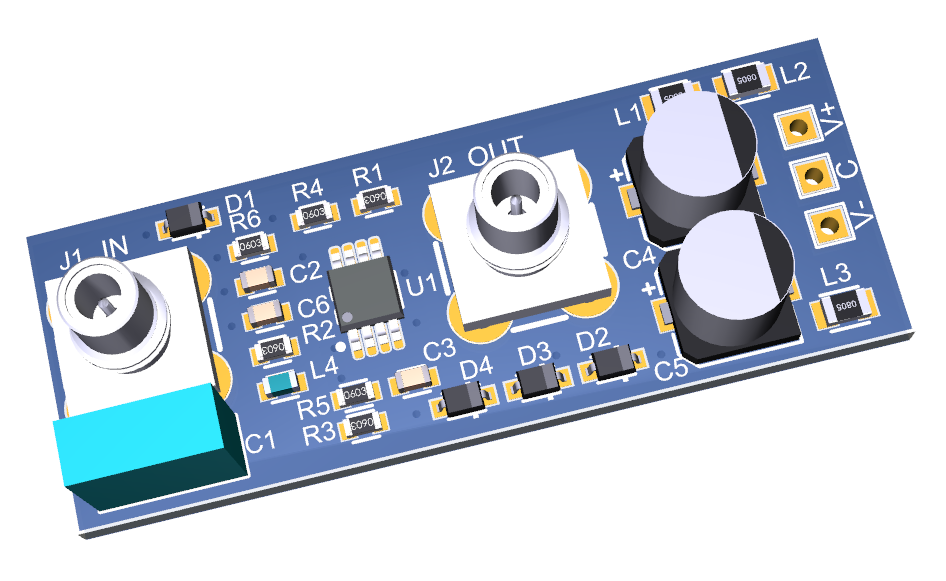Example Projects
This is a 12 layer board for a medical diagnostic instrument. This design has a mix of switching power supplies, TEC drivers, motor drivers, analog,
and digital circuits. It required a fairly powerful micro and fast memory to analyze the images from two cameras.
Zoom-in of the board showing the i.MX53 application processor, DDR3 memories, and FPGA. The chip below the i.MX53 is the
companion power management chip. The processor runs a hard real-time Linux kernel using the Xenomai patches.
Here is the back side of the same board. Note the integration of analog circuits onto a board that also
has high speed digital logic and switching power. There are five 2 MHz, 12b ADC and two 16b, 8 input 250KHz ADC.
A closeup of the TEC drivers. Each of the two drivers is capable of up to +/- 18V, 12A. The output is smoothed to DC before going off board to the TECs.
The AC resistance of the TECs is monitored to provide reliability and EOL information. The logic to measure the AC resistance was integrated into the FPGA
that generated the PWM signals and ran the analog to digital converters.
Once is a while, there's no better solution than a discrete transistor design. No problem!
A diagnostic instrument for portable applications. This design also has a mix of power, analog, and digital circuits. Of particular interest
is the high voltage, hybrid opamp using a precision low voltage IC opamp front end with discrete output stage. It generates precise signals up to +/- 500V
peak and can be built from inexpensive and readily sourced components.
The power supply for the high voltage rails is built around a CCFL transformer. All supplies on the board are derived from a single 12V input.
The ethernet interface could be used to control all aspects of the board through a commandline interface, and also provided a web interface for
configuration and firmware update.
A small and inexpensive Lattice FPGA sequences an 8 input, 16b ADC, and does some light signal processing on the results.
Three of the ADC inputs are from the load cell amplifiers above.
The FPGA is in a 7x7mm DFN package with 48 pads. These parts get down to a few dollars even in small quantities.
The FPGA has a 20 MHz SPI interface to the microcontroller. At startup, this interface is used to download a 70K byte FPGA configuration image.
After configuration the same interface becomes a bidirectional communications link between the two.
Five thousand glorious watts of power conversion on one PCB. This 4 layer board is 92 mils thick and has 2 internal plane layers of
2 oz copper. This board includes a three phase boost converter and two full-bridge converters. The power switching is done with fifteen
600V, 34A super-junction MOSFETs. These are switched by 3A and 4.5A drivers,
not visible in the picture, which are tightly integrated into the layout. The relatively low switching losses and high frequency of operation
make the high power density practical.
The metal loops standing up on the board are current sense resistors. The currents are amplified and measured with
floating circuits which are synchronously oversampling the generated signals. A bitstream is returned through high voltage isolators.
All the timing and control comes from an FPGA on a higher density, external board which connects at the 96 pin Euro-DIN.
The metal bar at the back is a heat spreader for the line of TO-247 power transistors. It attaches to a cold plate.
